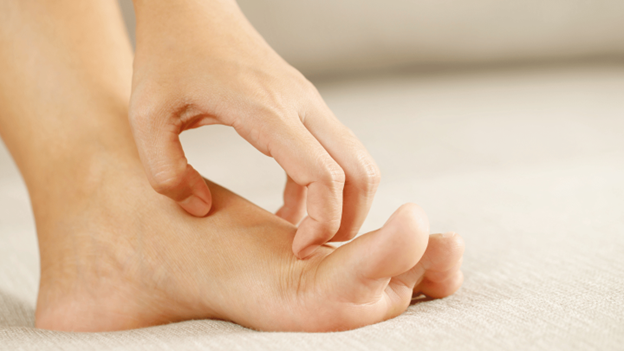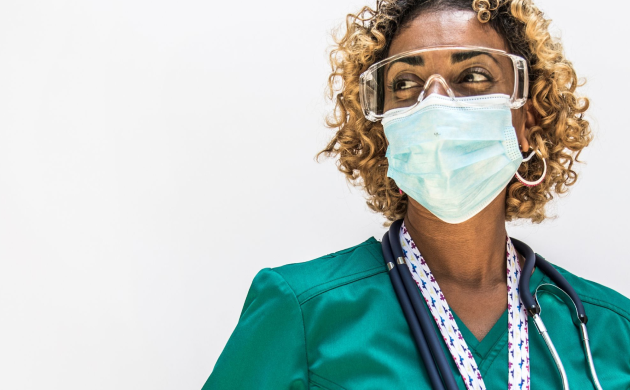
Skin fungal infections: how to spot, treat and prevent them in warm weather.
That persistent itchy, red rash that keeps you awake at night? Or the mysterious scaly patch slowly expanding across your skin? These aren't just minor irritations, they could be signs of a skin fungal infection that demands your attention.
Understanding these common yet frequently misdiagnosed conditions could save you weeks of unnecessary discomfort and prevent their spread to other areas of your body or to those around you.
Skin fungal infections: what are they and what causes them?
Fungal infections on your skin happen when naturally-occurring fungi on your skin decide to grow beyond their normal levels.
Knowing which type you have helps you treat it more effectively.
Here are the most common types you might encounter:
- Athlete's Foot. That itchy, peeling skin between your toes, often with a burning sensation and sometimes small blisters. Walking barefoot in public locker rooms or communal showers can expose you to fungi that cause athlete's foot.
- Ringworm. Despite the name, there's no worm involved. Just a red, circular rash with raised edges that spreads outward and can be quite itchy. Playing contact sports like wrestling can lead to ringworm if you come into direct skin-to-skin contact with an infected person.
- Jock Itch. A red, often itchy rash that shows up in warm, sweaty areas like your groin and inner thighs. Wearing tight, sweaty clothing for extended periods creates a moist environment that promotes fungal growth, leading to jock itch.
- Yeast Infections. Causes redness, irritation and sometimes white patches in skin folds where moisture tends to gather. Experiencing prolonged moisture in skin folds, such as under the breasts or in the groin area, can lead to yeast infections.
Quick and effective treatment tips for fungal infections.
The sooner you start treating a fungal infection on your skin, the faster you'll find relief.
Here's what helps:
- Try over-the-counter antifungal creams. Products with ingredients like clotrimazole or miconazole work well for most mild infections when used regularly.
- Keep the area nice and dry. Fungi need moisture to grow, so keeping your skin dry helps stop them in their tracks.
- Try not to scratch. We know it's tempting, but scratching can spread the infection to other parts of your body and make everything feel worse.
- Wash your clothes and towels frequently. Fungi can hitch a ride on fabric, so regular washing with hot water helps prevent reinfection.
- Consider prescription antifungal medications. If your fungal infection isn’t clearing up with over-the-counter creams or keeps coming back, it might be time for something stronger. Doctors prescribe oral antifungal medications like itraconazole, fluconazole, or terbinafine for stubborn or widespread infections.
Why fungal infections are more common in spring and summer.
The connection between warm weather and fungal infections makes perfect sense when you think about it. Heat, humidity and sweating create ideal conditions for fungi to grow on your skin.
Your summer routine probably includes:
- More physical activity and sweating.
- More time at public pools and gyms.
- Wearing sandals or going barefoot more often.
That unexplained rash after your beach day or post-workout might actually be fungi taking advantage of these perfect conditions!
Keeping fungi at bay: prevention tips.
Here are some easy tips to help keep your skin fungus-free:
- Stay dry when possible. Use powder in areas prone to moisture and change out of damp clothes when you can.
- Wear breathable clothing. Choose loose-fitting clothes made from natural fabrics that let your skin breathe.
- Keep personal items personal. Avoid sharing towels, razors, or shoes to prevent spreading infections.
- Protect your feet in public places. Wear flip-flops or water shoes in public showers, locker rooms and around pools.
- Act quickly at the first sign of trouble. The earlier you start treatment, the easier it is to clear up an infection.
How do you tell if a skin infection is fungal or bacterial?
Skin infections can be tricky to figure out, especially when they look similar at first glance. But there are a few key differences between fungal and bacterial infections that can help you tell them apart.
Signs of a fungal skin infection.
- Itchy, scaly, or flaky skin (often with redness).
- Slow-spreading rash that may have a circular shape (like ringworm).
- Moist or cracked skin in warm areas like skin folds.
- No pus or open sores (unless irritated by scratching).
Signs of a bacterial skin infection.
- Red, swollen and painful skin that feels warm to the touch.
- Pus, blisters, or open sores (common in bacterial infections like impetigo).
- Spreads quickly and can develop into a deeper infection.
- Fever or chills in more severe cases.
Fungal vs. bacterial skin infections: how to know for sure.
If your skin infection isn’t improving with over-the-counter antifungal creams or it’s getting worse quickly, it might be bacterial.
Bacterial infections often require antibiotics, while fungal infections typically respond to antifungal treatments. If you’re unsure, a doctor can diagnose the infection and prescribe the right medication.
At CityMD, we can quickly identify whether your skin infection is fungal or bacterial and get you the right treatment.
When to get some extra help with fungal infections.
Sometimes, despite your best efforts, fungal infections can be stubborn. If you're dealing with severe symptoms, spreading infection, or it keeps coming back, don't hesitate to seek professional help.
Remember, fungal infections on the skin are incredibly common and nothing to be embarrassed about at all. With the right approach, you can easily manage them and keep your skin healthy all year round, even during those hot summer months!
If you're dealing with a persistent or severe fungal infection on your skin, don't hesitate to seek professional care. At CityMD, our board-certified physicians are ready to provide expert treatment to get you back to feeling your best.
With locations across New York and New Jersey, we offer convenient walk-in services, no appointment necessary. Find a location near you and learn more about our comprehensive services.

We’re ready to care for you.
Visit any CityMD urgent care location in your community today for an evaluation with one of our expert providers.